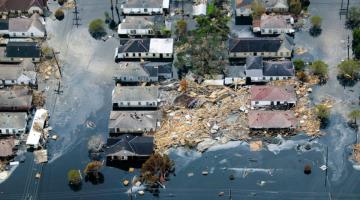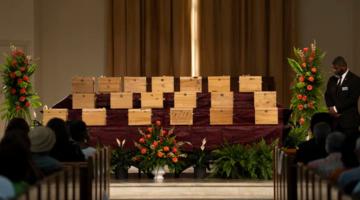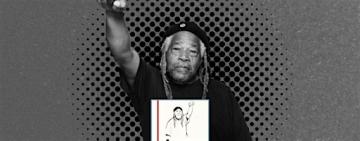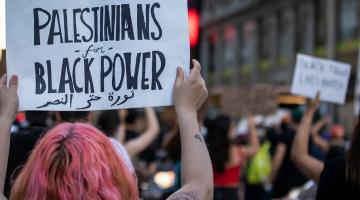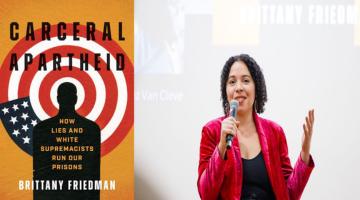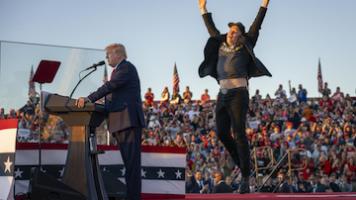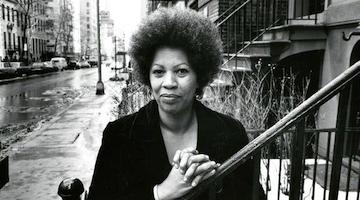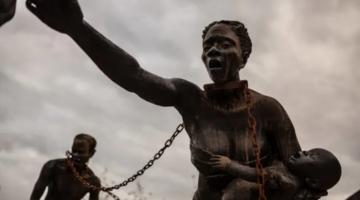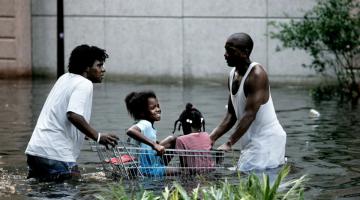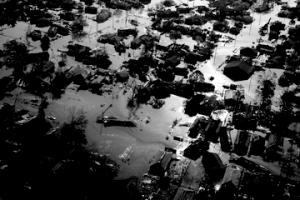The dashcam video from July 2016 showing St. Anthony Police officer Jeronimo Yanez aiming into the vehicle driven by Philando Castile in Falcon Heights, Minn. St. Anthony Police Department. AP
Minnesota’s progressive myth shatters as its racial gaps in income, education, and housing eclipse even Deep South states, and right wing whites turn to violence against their own people.
Known alternately as the “Happy Warrior” and the “Liberal Lion,” Minnesota’s U.S. Senator, Hubert H. Humphrey, often scolded his colleagues for failing to address racial discrimination against African Americans in the final days of the Jim Crow era of the 1950s and 60s, often triggering southern Democrats, in particular, to bristle. Said Florida’s George Smathers, who served with Humphrey in the U.S. Senate:
“In the whole state of Minnesota at that time, they didn't have 5,000 Blacks living out there.”
My, how times have changed.
Ninety-three percent white as recently as 1970, the Twin Cities of Minneapolis and St, Paul has seen its minority population nearly quintuple to 31 percent since Mary Tyler Moore last tossed her bonnet towards the Minneapolis skyline in the iconic opening of her eponymous show. An influx of African Americans, Hmong, Laotians, Latinos and east African refugees has reshaped the politics of this metropolitan area that was widely regarded as among the most liberal in the country a generation ago, eclipsed only by San Francisco and Seattle in the minds of many.
The arrest Monday of a Minnesota man on charges that he assassinated one state lawmaker and shot another is yet another reminder that the state is not the quaint, Scandinavian enclave that was the basis of Garrison Keillor’s Lake Wobegon.
On Monday, interim U.S. Attorney Joseph H. Thompson said 57-year-old Vance Boelter had compiled a hit list of more than 45 elected officials in the state, all Democrats, and was carrying out his attacks early Saturday morning when he was confronted by patrol officers in a suburb north of Minneapolis. Thompson would not address Boelter’s motives but a friend, David Carlson, told CNN that Boelter was a conservative who was staunchly opposed to abortion. In texts to his wife and daughters, Boelter seems to acknowledge that he was motivated by the same sense of aggrievement that has animated reactionary white male terrorists dating back to Timothy McVeigh, who was executed for the 1995 bombing of the federal courthouse in Oklahoma City; Dylann Roof who gunned down nine Black worshippers at Mother Emanuel African Methodist Episcopal Church in Charleston, S.C. 10 years ago this week; and 18-year-old Payton Gendron who fatally shot 10 African American shoppers at a Buffalo grocery store in 2022. Wrote Boelter in one text:
“Dad went to war last night…I don’t wanna say more because I don’t want to implicate anybody.”
The slain state Representative, Melissa Hortman, and her husband Mark were white, but their killings appear to bear all the hallmarks of an attack carried out by a “lone-wolf” gunman angered by people of color or white liberals whose political values he considers a threat to white America.
Such attacks are sparked by an economic downturn like the Great Recession that began in 2008, and coincide with a surge in state violence targeting African Americans by a ratio of nearly three to one over whites. According to data compiled by the Washington Post, nearly 2500 Blacks were killed by police nationwide between January 1st 2015 and January 1st, 2025. That includes several high-profile cases in the Twin Cities.
In 2017, jurors cleared a police officer in a St. Paul suburb of fatally shooting an African American passenger, 32-year-old Philando Castile during a 2016 traffic stop. Five years later, the mother of Daunte Wright complained that a judge was swayed by “white woman tears” in sentencing the suburban Minneapolis police officer, Kim Potter, to only two years for fatally shooting her 20-year-old African American son during a traffic stop. That same month, Minneapolis police executing a no-knock search warrant in a homicide investigation fatally shot a 22-year-old African American, Amir Locke, in a downtown apartment. Locke was not named in the warrant; no police officers were charged in the shooting.
Those killings bracket the 2020 murder of George Floyd by a white Minneapolis police officer, Derek Chauvin, launching a season of worldwide protests and calls to defund the police. A jury found Chauvin guilty of second-degree murder and a number of lesser charges, and Minneapolis officials created departments to promote greater police oversight, yet neither the city nor state passed legislation to eliminate qualified immunity for law-enforcement officials involved in fatal encounters. Robert Lilligren, the first Native American elected to the Minneapolis City Council, told the New York Times in 2020:
“Minneapolis has ridden this reputation of being progressive. That’s the vibe: Do something superficial and feel like you did something big. Create a civil rights commission, create a civilian review board for the police, but don’t give them the authority to change the policies and change the system.”
It is not that the electorate in Minnesota has flipped from blue to red; Kamala Harris won 51.1 percent of the vote in last year’s presidential election and the state has voted for every Democratic presidential nominee since 1976. But increasingly, the state is of two minds, with Trump decreasing the Democrats’ margin from 7.1 percent in 2016 to 4.2 percent in 2024. Trump last year even managed to flip four Minnesota counties from blue to red.
And while discriminatory policing is the most visible emblem of Minnesota’s growing racial divide, yawning gaps in health, income and homeownership are also among the worst in the nation. Home to more Fortune 500 companies on a per capita basis than any other state, employers in Minneapolis once boasted of a public school system that was regarded as one of the best in the nation. But as student enrollment has grown increasingly darker–nearly 62 percent of students enrolled in Twin Cities public schools are now nonwhite–Minnesota’s education system has produced worsening outcomes. White Minnesotans are 15 percentage points more likely to graduate than Black ones, the sixth-highest disparity in the nation, according to federal data.
In the Annie E. Casey Foundation’s annual rankings of education quality, Minnesota’s public schools have plummeted from 6th to 19th among all states. Similarly, national benchmarks found that Minnesota fourth graders’ reading proficiency fell below the national average for the first time in 2022. In fact, elementary school students in the deep-red state of Mississippi now perform slightly better on national reading tests than their Minnesota peers.
In the 2018 book that he co-authored, Professor Samuel L. Myers Jr., the retired director of the Roy Wilkins Center of Human Relations and Social Justice at the Humphrey School of Public Affairs at the University of Minnesota refers to the paradox between the veneer of civility known as “Minnesota Nice” and the reality that it is no less racist than any other state.
Myers writes that racial disparities in wealth and income are due largely to housing discrimination just as is the case nationwide, noting that only a quarter of African American households in Minnesota own their own home compared to three-quarters of white households in the state, representing the nation’s third widest racial gap in homeownership.
Minnesota’s progressive myth shatters as its racial gaps in schools, housing, and bloodshed eclipse even Deep South states.
A 2015 study co-authored by Myers analyzed the lending practices for the Twin Cities 50 largest banks between 2008 and 2013 and found that lenders rejected Black mortgage applications at significantly higher rates than whites, and that gap in loan denial rates cannot be explained by credit scores or applicants' income. Said Myers to reporters in 2018:
“How is it possible for poorly educated whites to have homeownership that is higher than middle-income, well-educated blacks?”
It is not that Minnesota has only recently discovered racism but that liberalism acted as a masking agent that disguised it as something more anodyne in a state where for the longest, there was no need to be anti-Black because there were, for all intents and purposes, no African Americans.
Lawrence R. Jacobs, a political scientist at the University of Minnesota, told the New York Times in 2020:
“The racism has been around for a very, very long time. You can see it in the redlining of neighborhoods, the education system, the transportation system and, obviously, policing.”
Minnesota’s rightward political shift serves as a validation of Smathers’ riposte to Humphrey’s advocacy for civil rights 65 years ago and a reminder that liberalism is no less a failed political ideology than conservatism.
Jon Jeter is a former foreign correspondent for the Washington Post. He is the author of Flat Broke in the Free Market: How Globalization Fleeced Working People and the co-author of A Day Late and a Dollar Short: Dark Days and Bright Nights in Obama's Postracial America. His work can be found on Patreon as well as Black Republic Media.


